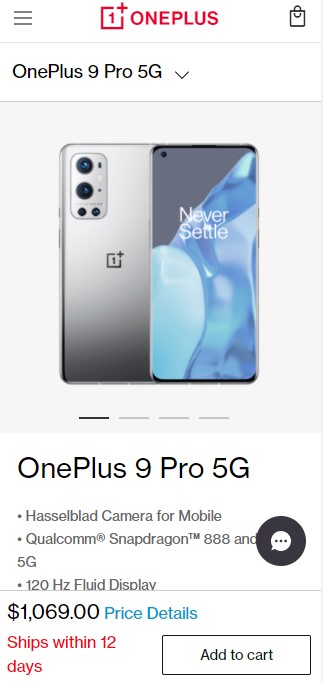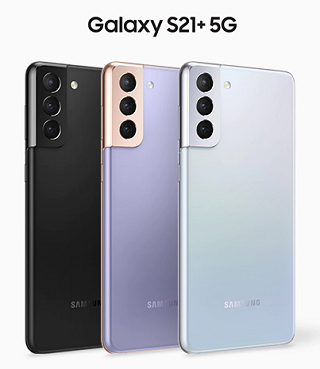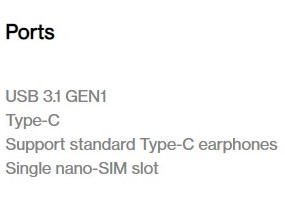It's #poll time again!!!!
— PiunikaWeb (@PiunikaWeb) April 11, 2021
Is buying the OnePlus 9 Pro in the U.S. getting you a better deal than Samsung Galaxy S21+?
Vote below & read our op-ed here: https://t.co/oIOJ3MmMbI
New updates are being added to the bottom of the story…
Original story (from April 11, 2021) follows:
Gone are the days when Android was considered the most diverse platform in the smartphone market, boasting top-notch devices from multiple vendors across the divide.
Today, things have changed drastically, and Android no longer has its strength in choice, instead it’s fast grown into a platform with fewer choices, especially for North Americans.
The likes of HTC, Sony, Asus, ZTE and Motorola have either closed shop or scaled down their U.S. operations and thus no longer make the waves they used to back in the day. And most recently, we saw LG calling it quits.

As of this writing, U.S. smartphone buyers only have two serious contenders remaining, especially when it comes to the premium segment — Samsung and OnePlus.
Samsung remains the most popular Android vendor in the U.S. while OnePlus has been quickly gaining traction by taking advantage of the void left behind by other players.
Today, anyone looking to buy a premium Android phone released in the country in 2021 through any of the major carriers only has Samsung Galaxy S21 and OnePlus 9 series of devices to pick from.
And I hate to be the bearer of bad vibes — that the OnePlus 9 Pro probably isn’t the ultimate Android phone to buy despite the limited alternatives available.

Before coming for my neck, hear me out. There are a couple or so reasons OnePlus became so popular in the U.S. over such a short period of time.
One obvious reason was the affordable pricing for high-end phones compared to the competition. But at $970 for the OnePlus 9 Pro base model, price is no longer a competitive advantage for OnePlus phones.
For comparison, the base model of the Galaxy S21+ starts at $1,000 while the high-end model, which has the same 256GB storage as the high-end OnePlus 9 Pro, goes for $1,050.
Sure, there are a few perks you get on the OnePlus 9 Pro that aren’t available on the Galaxy S21 series, among them a higher screen resolution (1440p), 65W wired and 50W wireless fast charging, and up to 12GB RAM.
But the Galaxy S21+ makes up for these with superior hardware (AMOLED screen, fingerprint scanner, etc.) and design materials in general, better cameras (especially with respect to videography), bigger battery, reverse wireless charging, and so on.

Of course, there are always trade-offs when choosing between one phone and the other. But the amount one is willing to give up usually depends on one other thing — software experience.
This brings us to the second reason OnePlus phones became popular. The near-stock OxygenOS has been a major factor in the success story of the company.
OnePlus also became renowned for its fast and timely delivery of software updates, both monthly security patches and major Android OS updates.
However, this is no longer the case as I pen this. In fact, the same Samsung that used to get a lot of stick for its slow updates now sits well on top of OnePlus.
In addition to stepping up the speed of delivery, Samsung has also extended support for its premium and some midrange phones, promising up to 3 major Android OS updates and four years of security patches.

With all these extra perks you get from Samsung coupled with the many features and optimizations included in One UI 3, paying the extra $30 for the base model of the Galaxy S21+ over the OnePlus 9 Pro should be a no-brainer.
In fact, you’ll still be getting ‘more phone’ at $1,050 for the premium Galaxy S21+ compared to parting ways with $1,070 for the high-end OnePlus 9 Pro. And this is despite the additional 4GB RAM and faster charging.
At this point, it looks like the only viable reason for buying the OnePlus 9 Pro over the Galaxy S21+ in the U.S. is the speedy wired and wireless charging.
And as if not enough, it gets even more disappointing for those who got lured into the OnePlus camp thanks to the support for dual SIM feature.
Apparently, units sold in North America no longer have this function. And since dual SIM support is no longer a USP for OnePlus phones, one might as well get the Galaxy S21+ instead. After all, it has an eSIM that could eventually become useful for dual SIM functionality.
It’s quite unfortunate that smartphone buyers in the U.S. only have Samsung and OnePlus to choose from with respect to the premium segment.
Granted, the OnePlus 9 Pro is still one of the best phones on the market that’s worth buying, not just the ultimate option when Samsung’s Galaxy S21 series comes into the picture.
The phone also remains a great buy outside the U.S. where Samsung phones tend to get pricier compared to OnePlus. For instance, in the UK, the OnePlus 9 Pro starts at £829 while the S21+ starts at £949.
In India, the Galaxy S21+ is priced at INR 76,999 for the base model while the OnePlus 9 Pro is cheaper, starting at INR 64,999.
That said, the OnePlus 9 Pro still offers some of the best bang for buck you can get. But for those outside the U.S., maybe it’s time to try Xiaomi Mi 11 and other vendors too.
What are your thoughts? Do you think the OnePlus 9 Pro is a better buy in the U.S. compared to the Galaxy S21+? Participate in the poll below & let us know your thoughts.
Update 1 (April 18, 2021)
IST 15:45 – Going by the poll results, while 36.7% believe that buying a OnePlus 9 Pro in the U.S. is getting them a better deal than Samsung Galaxy S21+, 43.3% believe that’s not the case.
Surprisingly, 20% of those who voted are still not aware of the brand.
PiunikaWeb started as purely an investigative tech journalism website with main focus on ‘breaking’ or ‘exclusive’ news. In no time, our stories got picked up by the likes of Forbes, Foxnews, Gizmodo, TechCrunch, Engadget, The Verge, Macrumors, and many others. Want to know more about us? Head here.

![[Poll results out] Here's why OnePlus 9 Pro probably isn't the best Android buy in the U.S. [Poll results out] Here's why OnePlus 9 Pro probably isn't the best Android buy in the U.S.](https://piunikaweb.com/wp-content/uploads/2021/04/OnePlus-9-Pro-1.jpg)



